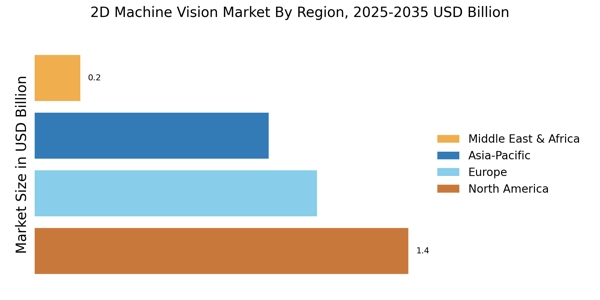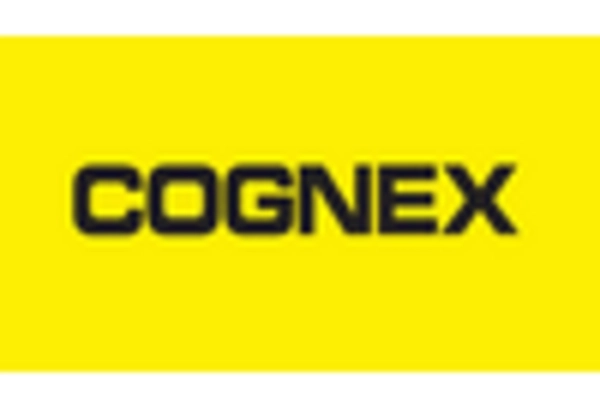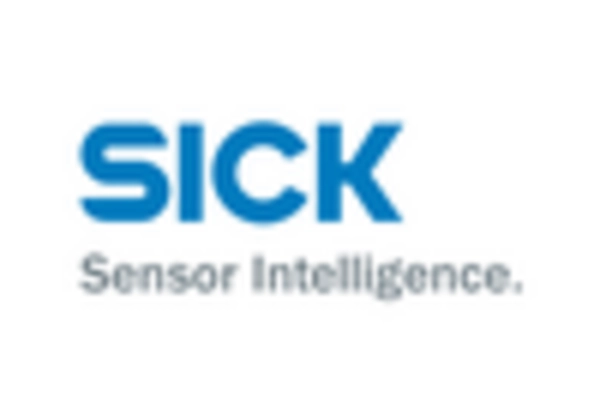Emergence of Smart Manufacturing
The emergence of smart manufacturing is reshaping the landscape of the 2D Machine Vision Market. With the advent of Industry 4.0, manufacturers are increasingly integrating advanced technologies such as the Internet of Things (IoT) and artificial intelligence into their operations. This integration facilitates real-time data analysis and decision-making, enhancing overall operational efficiency. Machine vision systems are essential components of smart manufacturing, as they provide critical insights into production processes. The smart manufacturing market is anticipated to grow at a rate of approximately 10% annually, which is likely to bolster the demand for 2D machine vision solutions. As companies seek to optimize their production lines and reduce downtime, the role of machine vision in smart manufacturing becomes increasingly vital.
Rising Demand for Quality Assurance
The rising demand for quality assurance across various sectors is a critical factor influencing the 2D Machine Vision Market. As consumers become more quality-conscious, manufacturers are compelled to adopt stringent quality control measures. Machine vision systems provide an efficient solution for real-time inspection and defect detection, ensuring that products meet established standards. The market for quality assurance technologies is projected to grow significantly, with estimates suggesting a value of around 5 billion USD by 2025. This trend indicates that companies are prioritizing quality assurance, which in turn drives the adoption of 2D machine vision systems. By implementing these technologies, businesses can enhance their reputation and customer satisfaction, ultimately leading to increased sales and market share.
Advancements in Imaging Technologies
The 2D Machine Vision Market is experiencing a notable transformation due to advancements in imaging technologies. Enhanced sensors and cameras are being developed, which significantly improve image resolution and processing speed. This evolution allows for more precise inspections and measurements in various applications, including manufacturing and quality control. The market for imaging sensors is projected to reach approximately 10 billion USD by 2026, indicating a robust growth trajectory. As industries increasingly adopt these technologies, the demand for sophisticated 2D machine vision systems is likely to rise, thereby driving the market forward. Furthermore, the integration of high-definition imaging capabilities enables companies to achieve higher accuracy in defect detection, which is crucial for maintaining product quality and reducing waste.
Increased Automation in Manufacturing
The trend towards increased automation in manufacturing processes is a significant driver for the 2D Machine Vision Market. As industries strive for efficiency and cost reduction, the implementation of automated systems becomes essential. Machine vision systems play a pivotal role in automating inspection and quality control processes, thereby minimizing human error and enhancing productivity. According to recent estimates, the automation market is expected to grow at a compound annual growth rate of over 9% through 2027. This growth is likely to propel the demand for 2D machine vision solutions, as they are integral to ensuring that automated systems operate effectively. Consequently, manufacturers are increasingly investing in these technologies to streamline operations and maintain competitive advantages.
Growing Adoption in Various Industries
The growing adoption of 2D machine vision systems across various industries is a prominent driver for the 2D Machine Vision Market. Sectors such as automotive, electronics, and pharmaceuticals are increasingly recognizing the benefits of machine vision for enhancing operational efficiency and product quality. For instance, the automotive industry is projected to invest over 3 billion USD in machine vision technologies by 2026, reflecting a strong commitment to quality and precision. This trend is indicative of a broader movement towards automation and advanced inspection techniques in manufacturing. As more industries embrace these technologies, the demand for 2D machine vision systems is expected to rise, further propelling market growth. The versatility of machine vision applications across different sectors underscores its importance in modern manufacturing.

















Leave a Comment